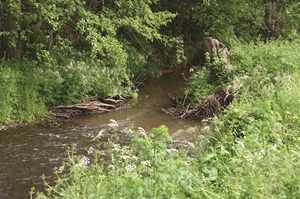 On most farms there are some good habitats for wildlife, and it is important protect and enhance them. You might have used options under Environmental Stewardship to do this or you might want to look at stating now. If you start now, you will be contributing to CFE, and you will get a feel for what works for you on your farm. This may be beneficial when the new agri-environment schemes are announced.
On most farms there are some good habitats for wildlife, and it is important protect and enhance them. You might have used options under Environmental Stewardship to do this or you might want to look at stating now. If you start now, you will be contributing to CFE, and you will get a feel for what works for you on your farm. This may be beneficial when the new agri-environment schemes are announced.
Below are just a few examples.
Hedgerows
They are a priority habitat. You should have a varied cutting regime around the farm with some hedges cut annually, some cut every other year, and some allowed to grow on and be laid or coppiced after five to seven years.
Streams and ditches
Buffering these feature with a grassy buffer so that soil, run-off, pesticides and fertiliser stay out the watercourses is the best thing to do. It is best to sow, or manage existing grass areas, to give a buffer at least 6m wide from the top of the bank. A mix of tussocky grasses and non-woody vegetation without too much cocksfoot (which tends to out-compete other grasses) is best. Cut as seldom as possible and try to avoid storing, or driving, on the buffer as this could increase compaction (VM1).
Farm ponds
These are key habitat for waterfowl and waders and as with Streams and ditches, they will benefit from being buffered from farming operations using a 6-metre-wide grassy buffer (VM1).
In-field trees
A characteristic of some landscapes and it is really worthwhile protecting them. The best thing to do is not to cultivate, or apply fertiliser or manures in the land area under the trees canopy.
Barn owls
Old farm buildings are often used as nest sites by these birds. Wide grass buffer strips (VM1) or taking awkward field corners out of production (VM17) can be used to create a tussocky grass habitat for field voles, which are the principal food for barn owls and kestrels.
Woodland edges
Many animals, but particularly pheasants, and in the upland fringes, black grouse, like to live along woodland edges. Buffer strips can be used to create soft edges to woodlands where trees fade into shrubs and rough vegetation. This is better for wildlife than a sharp transition from wood to pasture or crop.
Traditional meadows
The best option for permanent grassland is to manage them without fertiliser, which will increase the numbers of wildflowers, insects and small mammals present. You should continue to graze livestock or make hay (VM19).
If there are any Sites of Special Scientific Interest on the farm it would be sensible to consult Natural England on what scheme options might be available during the 2014 transition period.
Please refer to our pages on Countryside Stewardship for up-to-date information on the current agri-environment scheme in England.